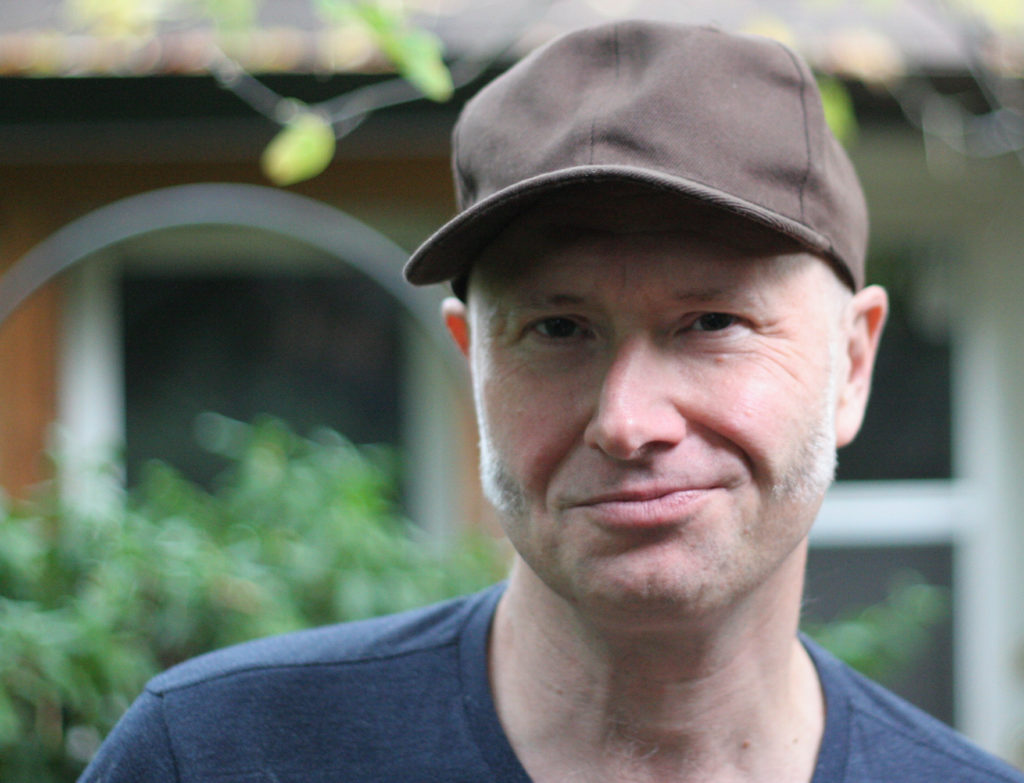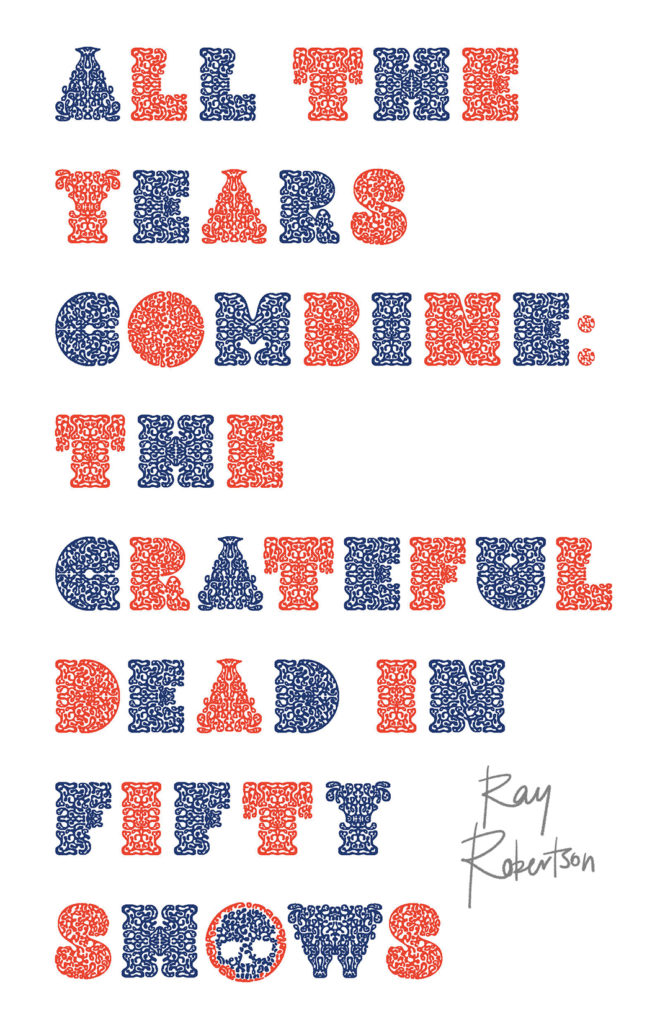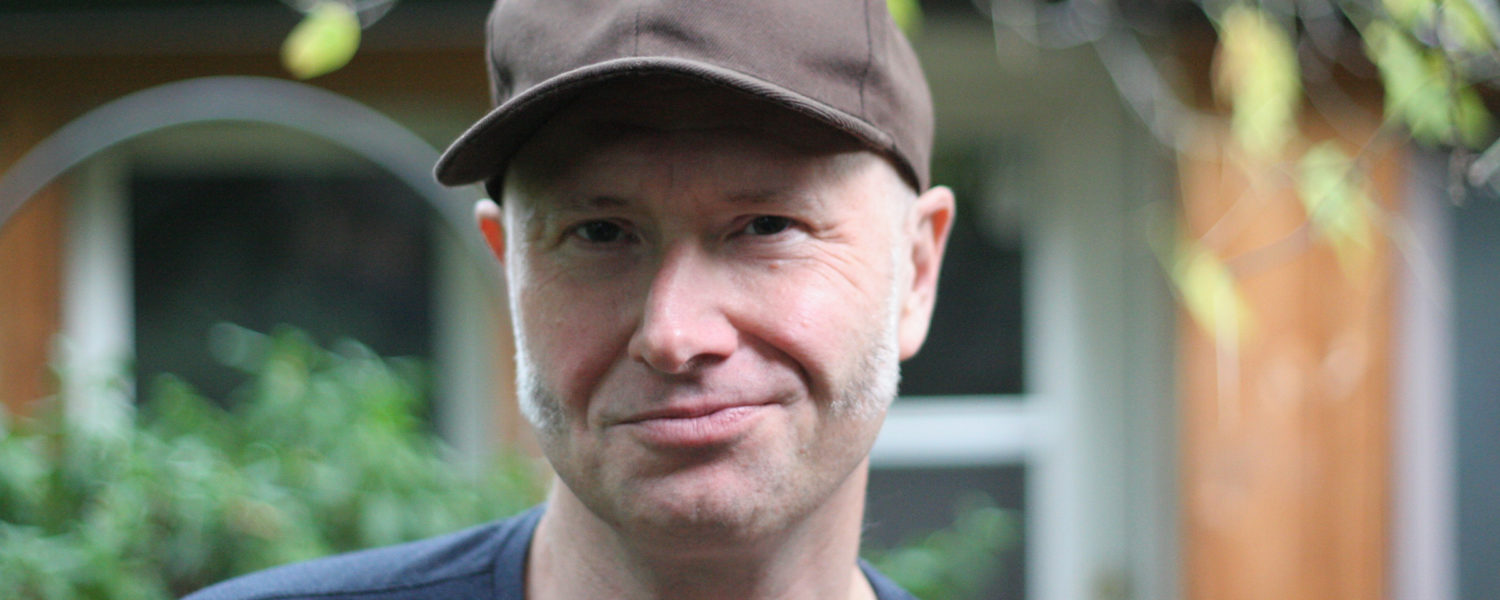Author Ray Robertson Shines
New Light on the Iconic Band
Story by Karen Tinsley
Photography by Myles Riley
Let’s clear this up right now: you need not be a ‘Dead Head’ to appreciate this book!
Even if you haven’t read any of Ray Robertson’s fourteen previous works (as was the case with this writer), even if you’re not a ‘Dead Head” (as is the case with this writer), chances are you’re
going to love “All the Years Combine: The Grateful Dead in Fifty Shows” anyway.
Why? Because whether you come from the Boomer, Millennial or Generation X, Y or Z, there’s something for everyone who loves music and loves to laugh.
If you do happen to be a Boomer (like this writer), the waves of nostalgia throughout Robertson’s candid, delightfully down-to-earth back-of-the-book essay “Pick A Prize: How I Became a Dead Head” will move you. And if you happen to have been born and raised ‘south of Detroit’, you’ll find Robertson very adept at painting perfect pictures with words: pictures of simpler, more innocent times. In fact, reading “Pick A Prize” before beginning the Introduction on page 13 is highly recommended.

Established in San Francisco during the 1960’s counterculture, founding members Jerry Garcia (lead guitar, vocals), Bob Weir (rhythm guitar, vocals), Ron “Pigpen” McKernan (keyboards, harmonica, vocals), Phil Lesh (bass guitar, vocals) and Bill Kreutzmann (drums) originally performed as the Warlocks.
After changing their name to Grateful Dead in 1967, drummer Mickey Hart joined the band. Except for McKernan (who died in 1973) and Hart (who took time off from 1971 – 1974), the core band stayed together for its entire 30-year history.
Other official band members included Keith Godchaux (keyboards, occasional vocals 1971-1979), Donna Godchaux (vocals, 1972-1979), Brent Mydland (keyboards, vocals, 1979-1990), and Vince Welnick (keyboards, vocals, 1990-1995). Bruce Hornsby (accordion, piano, vocals) was a touring member from 1990 to 1992.
Robertson first became aware of the Grateful Dead at age 13, after winning a game of skill at the Chatham Jaycee summer fair. A Grateful Dead bar mirror sporting a human skull with a lightning bolt in place of a brain was Robertson’s prize pick, because there “weren’t any Elton John Mirrors. There were Black Sabbath mirrors, Judas Priest mirrors, Van Halen mirrors, there were even Bachman-Turner Overdrive mirrors.”
However, his fascination with and appreciation for the band didn’t ignite until decades later: “ I fell in love with the sound of Jerry Garcia’s guitar when I was forty-seven years old…”
This meticulously researched musical anthology is Robertson’s journey through the live and bootleg recordings of Dead concerts (that are easily accessible online). He follows the Dead from their humble beginnings as an R&B-based garage band to jazz-rock conjurers at their creative peak, to their sad decline.
Certain music aficionados insist this decline began in 1978. Others claim 1984 was the critical tipping point. Then there are others who say it started in 1992.
But despite all these varying opinions about when the Grateful Dead were at their absolute peak or when they started their downhill slide, the fact remains that they enjoyed three decades of significant commercial and critical success (from 1965 to 1995). To this day, the band’s loyal fan base is as huge as ever.

Still somewhat of a musical enigma, while The Dead most definitely experienced artistic and commercial peaks and valleys, they did not combust as completely as many of their contemporaries.
With fourteen works of fiction and nonfiction behind him, Robertson captures the Grateful Dead essence in a series of short essays about 50 concerts (plus a “bonus” 51st show) in chronological order. In the Introduction, he proposes that a Grateful Dead concert “is life. Like life, it can be alternately compelling and lackluster; familiar and foreign; occasionally sublime and sometimes insipid.”
His goal seems not so much to determine the band’s best work, but to support this viewpoint.
As a kid growing up in Chatham while his musical tastes were still developing, it wasn’t love at first sound when Robertson heard “Blues for Allah” (the first Dead album he bought from the Discount Bin at Sam the Record Man). Then a friend’s mother offered to lend Robertson an album from her collection.
He writes, “Once I got over my disappointment that I wasn’t cooler than Brad Langford’s mum, I was thankful. Even if, like the Grateful Dead LP I’d bought at Sam’s, her album turned out to be not nearly as good as any one of my increasing number of Neil Young records, it was something I’d never heard before, somewhere else I’d never been. All you had to do was turn on the radio to know how rare that was.”
Decades later, Robertson became besotted with the sound of Jerry Garcia’s guitar.
He candidly admits he’s not a fan of the drum solos that become concert staples; he adores vocalist Donna Jean Godchaux’s work with the band during her seven year tenure from 1972 to 1979; the band’s heavy use of covering Marty Robbins’s “El Paso” and Chuck Berry tunes got a big thumbs down. In fact, Roberston declares that the Dead pretty well sucked throughout the ’80s, then limped along until Garcia’s death in 1995.
Robertson traces the musical changes through the band’s formative years as well as their artistic growth and curiosity.
He also aptly traces Garcia’s development as a singer when writing about “Morning Dew” (an existential Bonnie Dobson lament in the Dead’s concert repertoire throughout their existence). As perceptively noted in the ‘5/2/70 Harpur College, Binghamton, NY recording,’ Garcia “has found the right forlorn cadence and been shorn of his previously affected delivery…in his newly found phrasing, luxuriating in hitting all the high notes.”
Robertson contends that as the band became overwhelmed by business concerns, the impact of their music weakened. However, the Dead reached their biggest commercial success in the mid-’80s (long before they began performing at football stadiums in the ’90s).
Yet another voice in the ever-evolving Grateful Dead conversation, All the Years Combine shines new light on classic performances and takes opportunities to correct some long-entrenched band myths.




Add comment